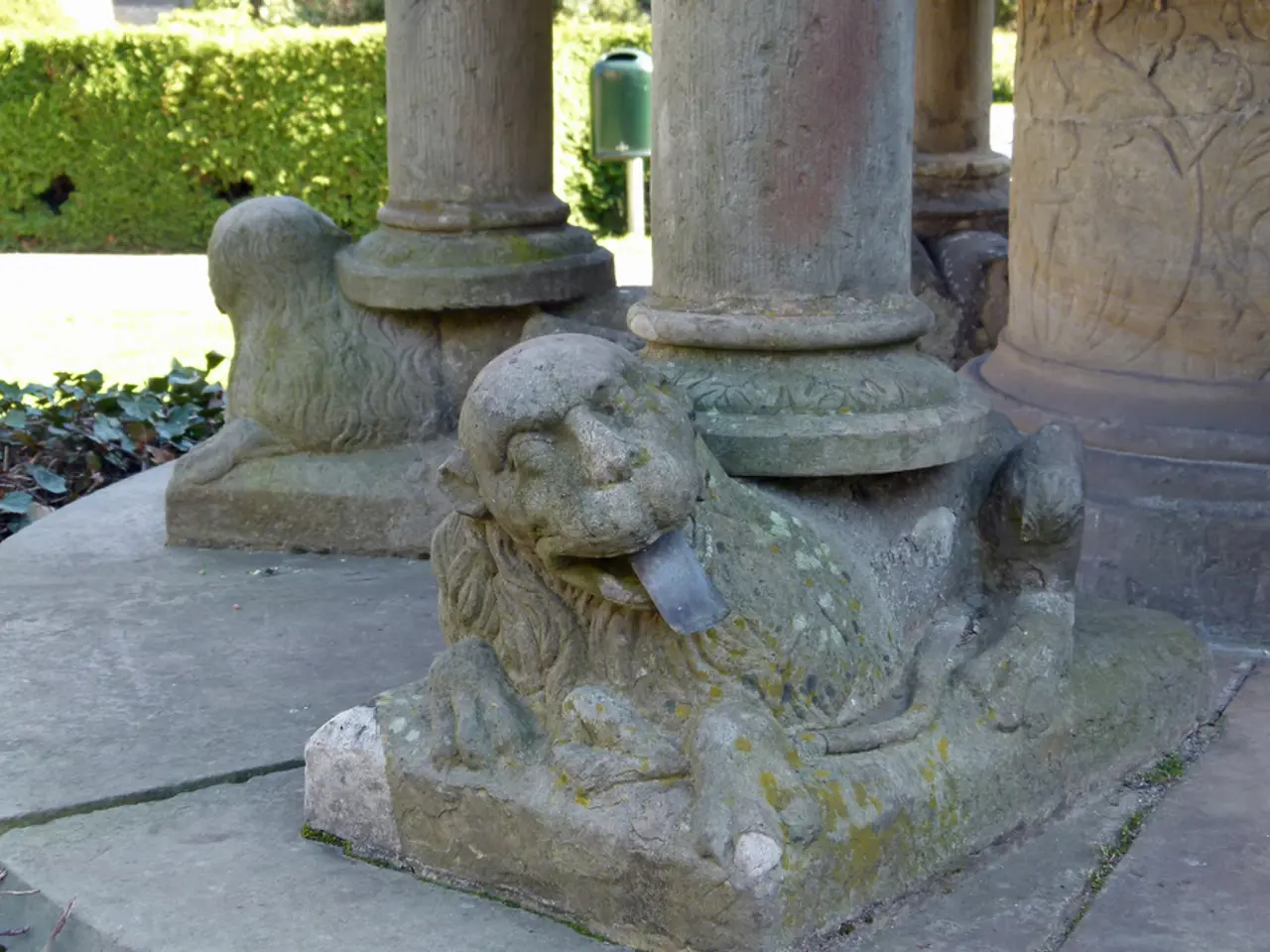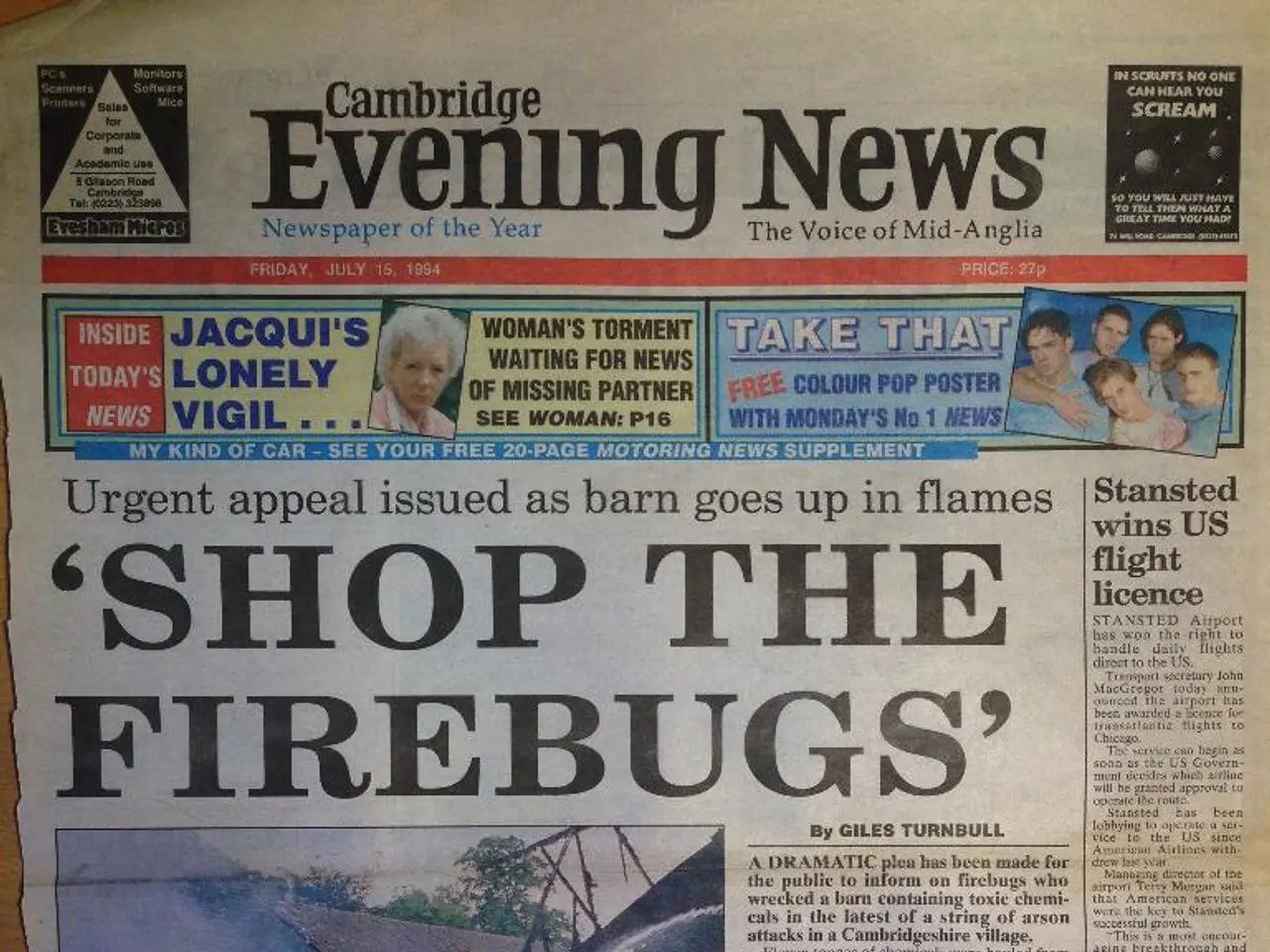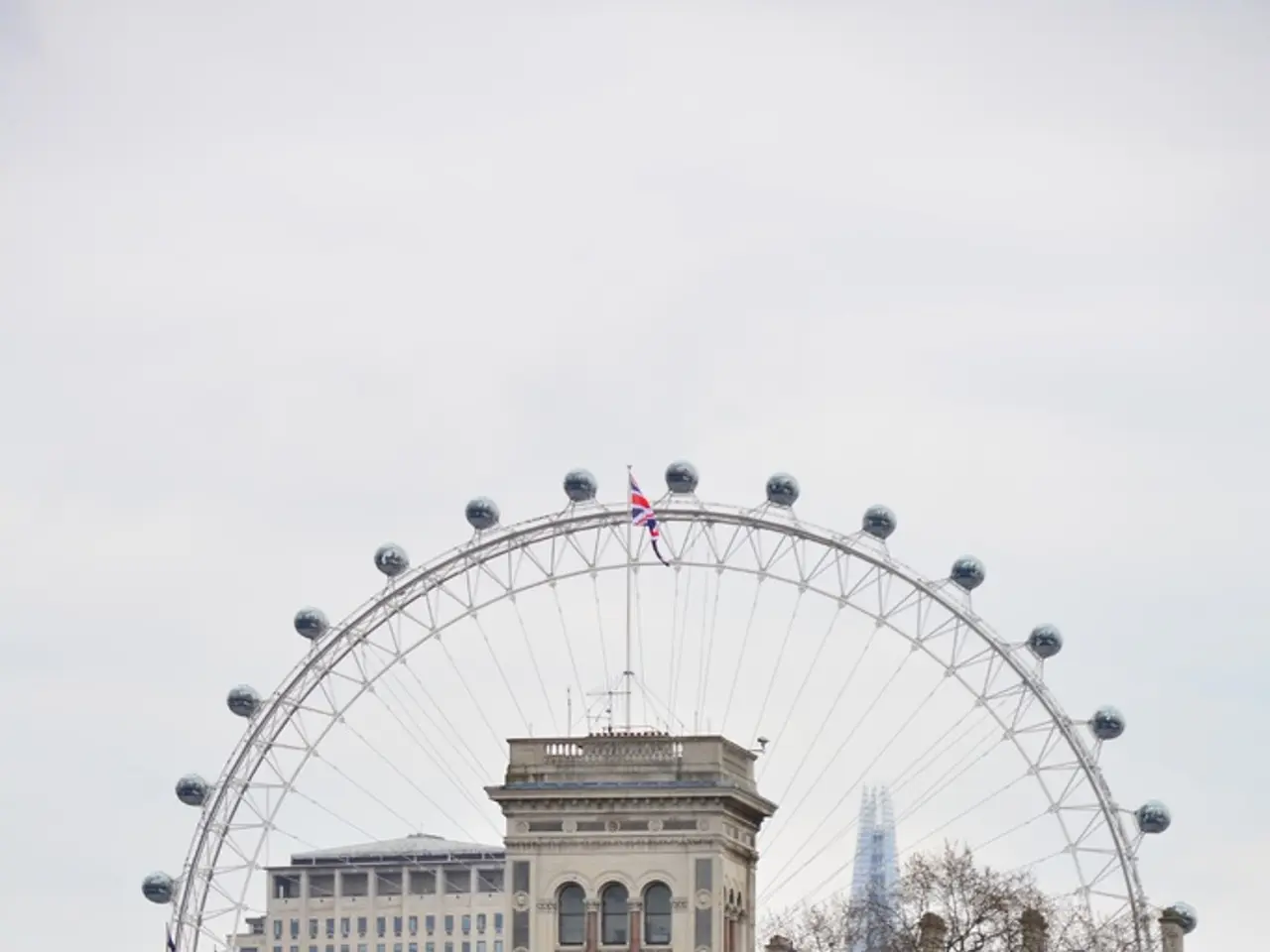Researcher's pride slain: Zimbabwe lion, essential for scientific study, brought down by trophy hunter, igniting public outrage
In the heart of Africa, a controversy has erupted over the trophy hunting of a collared lion named Blondie, part of an Oxford University research project, in Zimbabwe. This tragic event occurred in June, close to Hwange National Park.
Blondie, a five-year-old collared pride male lion, was legally hunted outside the national park. The incident has sparked outrage among conservationists and wildlife groups, who argue that such hunts undermine conservation efforts and ethical standards.
Tinashe Farawo, the spokesperson for Zimbabwe's parks agency, defended the hunt, stating that money from hunting is crucial for the nation's underfunded conservation efforts. However, the killing of a breeding male lion has raised concerns about the impact on lion populations.
Hunting lions is a divisive issue, even among conservationists. Some argue that it can raise money for conservation, while others want killing wildlife for sport to be banned outright. Trophy hunting of lions in Zimbabwe is legal and regulated, with authorities allowing up to 100 lions to be hunted annually under permits. The regulations specify that hunted lions should generally be mature, non-pride males aged six years or older, aimed at reducing impact on breeding populations.
However, controversies arise when hunts involve younger, breeding lions, as in the case of Blondie. Farawo did not have information on Blondie being lured out of the park with bait, but he stated that there is nothing unethical or illegal about this practice for those familiar with lion hunting.
The killing of Blondie comes six years after the hunt of another collared lion named Cecil, also involved in a research project, unleashed furious anger against Walter Palmer, a Minnesota dentist and trophy hunter. Palmer lured Cecil out of the same national park in Zimbabwe and shot him.
Simon Espley, the CEO of Africa Geographic, the safari company that sponsored Blondie's research collar, stated that Blondie's killing made a mockery of the ethics trophy hunters claim to follow, as Blondie was a breeding male in his prime.
Approximately 1,500 wild lions live in Zimbabwe, with around one-third of them residing in Hwange National Park. Across Africa, the wild lion population is estimated at around 20,000, but their numbers are decreasing due to habitat loss and human conflict. Lions, one of Africa's most iconic species, are currently listed as vulnerable by the International Union for Conservation of Nature.
Zimbabwe makes about $20 million a year from trophy hunting, with a single hunter spending an average of $100,000 per hunt, which includes accommodation, vehicle hire, and local trackers. Some African countries, like Kenya, have commercial hunting bans, while others, like Zimbabwe and South Africa, allow it. Botswana lifted a ban on hunting six years ago.
The hunter who killed Blondie had the necessary permits, according to Zimbabwe's National Parks. Farawo mentioned that rangers were present during the hunt, all paperwork was in order, and the collar on Blondie was for research purposes but did not provide immunity to hunting.
As the debate over trophy hunting continues, it is clear that striking a balance between legal hunting practices, conservation priorities, and ethical considerations is a challenge. The incident with Blondie underscores the need for stricter regulations and monitoring to ensure that hunting contributes positively to conservation efforts rather than threatening them.
The controversy over Blondie's trophy hunting, a five-year-old collared lion in Zimbabwe, highlights the ongoing debate within conservation circles, as some argue for the revenue-generating potential of trophy hunting in funding environmental-science projects, while others advocate for a general-news ban on sports-related activities involving wildlife.
Despite Zimbabwe's parks agency spokesperson, Tinashe Farawo, asserting that hunts like Blondie's can support the nation's underfunded conservation efforts, the killing of a breeding male lion has raised concerns about its impact on lion populations and the ethical implications of such practices in the field of environmental-science.








